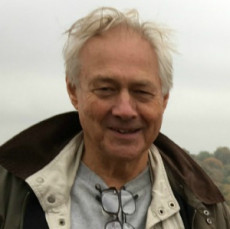Tuzla, July 24, 2008: Today, I embark on a visit to Srebrenica in Eastern Bosnia, scene of the 1995 massacre. The trip is being undertaken at the invitation of Beba Hadzic, director of the Bosnian women’s organization Bosfam which is headquartered in the Bosnian town of Tuzla. Many of Bosfam’s members lost relatives in the massacre. The Advocacy Project (AP) is helping them to develop and promote a memorial quilt that they are making to those who died.
AP exhibited the first twenty panels of the quilt in St Louis, which has the largest number of Srebrenicans outside Bosnia. Since then the weavers have produced 65 panels and attracted over 100 sponsors for the quilt, mostly in the Bosnian diaspora.
The Bosfam weavers are keen to expand this project and have asked me to visit and strategize with them. The timing is certainly fortuitous. Last week, the Serbian government announced that Radovan Karadzic, the wartime head of the Bosnian Serbs, had been detained after 13 years in hiding in Belgrade. Karadzic has been indicted by the Hague Tribunal for masterminding the Srebrenica massacre. His arrest was electrifying.
I remember Karadzic well from my own time as a journalist. He used to come through Geneva regularly to attend UN peace talks and loved to preen before a world audience. Lord David Owen, who headed the EU team in the negotiations, has written of his distaste for the man, but Karadzic ran rings around Owen and the UN during the war. Those who came nearest to calling his bluff were American feminists who slapped a law suit on him when he attended talks in New York. That discouraged Karadzic from visiting the United States, but the world was unable to halt his evil vision for Bosnia, and one result was the Srebrenica massacre.
Karadzic then compounded the crime by slipping underground for 13 years. A good part of the world’s fascination with Srebrenica has to do with the fact that he and Ratko Mladic, the Serb general, managed to escape punishment for 13 years. Srebrenica is a symbol of impunity as well as brutality.
I arrive this evening at Sarajevo airport, to be met by Shweta Dewan, an AP Peace Fellow from Zambia who is working with Bosfam this summer. Shweta has driven up from Tuzla, where Bosfam’s office is located, with Nadim a young Bosnian who lost a relative at Srebrenica and is employed by Bosfam as a driver. We drive out past Ilidza, a suburb of Sarajevo that still bears pock-marks from the war, and onto the rain-slicked road to Tuzla. It feels good to be back in Bosnia.
Posted By Iain Guest
Posted Jul 24th, 2008

